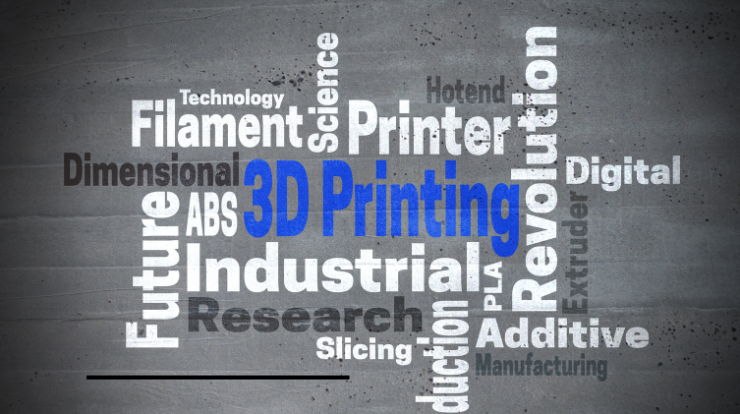
Research and Development (R&D) plays a crucial role in the advancement and future of 3D printing technology, particularly in a rapidly developing city like Dubai. Known for its innovation and futuristic vision, Dubai is investing heavily in R&D to drive the evolution of 3D printing across various sectors.
This essay explores the role of R&D in the future of 3D printing in Dubai, focusing on technological advancements, material development, industry applications, education and training, regulatory frameworks, and collaboration and partnerships.
Technological Advancements
Development of Advanced 3D Printers
R&D is essential for developing advanced 3D printers that are faster, more efficient, and capable of producing higher quality prints. In Dubai, ongoing research is focusing on improving the speed and precision of 3D printers, making them more suitable for large-scale and commercial applications.
Enhanced printer capabilities will enable more complex and detailed designs, which are crucial for sectors like construction and healthcare.
Integration of AI and Machine Learning
The integration of artificial intelligence (AI) and machine learning with 3D printing technology is another area where R&D is making significant strides.
AI can optimize printing processes, predict maintenance needs, and improve the accuracy of prints. Dubai’s focus on becoming a smart city includes leveraging AI to enhance 3D printing technology, resulting in more efficient and reliable production methods.
Material Development
Innovative and Sustainable Materials
The development of new materials is a critical aspect of 3D printing R&D. Researchers in Dubai are working on creating innovative and sustainable materials that can be used in various industries.
For instance, biodegradable and recyclable materials are being developed to reduce the environmental impact of 3D printing. In construction, the use of locally sourced materials can reduce costs and improve sustainability.
High-Performance Materials
R&D efforts are also directed towards high-performance materials that can withstand extreme conditions and meet the specific needs of different industries. For example, in the aerospace and automotive sectors, there is a demand for lightweight yet strong materials. Developing such materials through R&D will expand the applications of 3D printing and enhance its viability in these demanding fields.
Industry Applications
Construction and Infrastructure
R&D is driving the application of 3D printing in the construction industry, which is a key focus area for Dubai. Research into 3D printing techniques for building construction aims to reduce costs, improve efficiency, and enable the creation of complex architectural designs.
The 3D Printing Dubai Strategy aims for 25% of buildings to be 3D printed by 2030, and ongoing R&D is critical to achieving this goal by developing scalable and robust 3D printing methods.
Healthcare Innovations
In healthcare, R&D is facilitating the development of personalized medical treatments and devices. Research is focused on creating custom prosthetics, implants, and even bioprinted tissues and organs.
Dubai’s healthcare sector benefits from R&D initiatives that aim to enhance patient outcomes and reduce treatment costs through the use of 3D printing technology.
Manufacturing and Production
R&D in 3D printing is transforming the manufacturing sector by enabling the production of custom and complex parts on demand. This reduces inventory costs and allows for more flexible and responsive manufacturing processes. Research into additive manufacturing techniques is helping Dubai’s industrial sector to innovate and stay competitive in the global market.
Education and Training
Developing Skilled Workforce
R&D also plays a vital role in education and training, ensuring that the workforce is equipped with the necessary skills to leverage 3D printing technology. Dubai is investing in educational programs and research institutions that focus on 3D printing.
This includes developing curricula that cover the latest advancements in 3D printing and providing hands-on training with state-of-the-art equipment.
Academic and Industry Collaboration
Collaboration between academic institutions and industry is essential for advancing 3D printing technology. Dubai encourages partnerships between universities, research centers, and businesses to foster innovation and practical application of research findings.
These collaborations ensure that R&D efforts are aligned with industry needs and that students are prepared to meet the demands of the job market.
Regulatory Frameworks
Establishing Standards and Guidelines
As 3D printing technology evolves, there is a need for comprehensive regulatory frameworks to ensure safety, quality, and ethical standards.
R&D is instrumental in developing these standards and guidelines. Research into the implications and best practices for 3D printing helps regulators create policies that promote innovation while safeguarding public interests.
Addressing Legal and Ethical Issues
R&D also addresses the legal and ethical issues related to 3D printing, such as intellectual property rights, product liability, and bioethics in medical applications. By exploring these areas, Dubai can develop a regulatory environment that supports the growth of 3D printing technology while addressing potential risks and challenges.
Collaboration and Partnerships
Public-Private Partnerships
Public-private partnerships are crucial for advancing 3D printing technology through R&D. The Dubai government collaborates with private companies and research institutions to fund and support innovative projects. These partnerships enable the sharing of resources, expertise, and knowledge, accelerating the development and deployment of 3D printing solutions.
International Collaboration
Dubai also engages in international collaborations to stay at the forefront of 3D printing technology. By partnering with global research institutions and participating in international research initiatives, Dubai can access cutting-edge knowledge and technologies. This international perspective enhances local R&D efforts and helps Dubai maintain its position as a leader in innovation.
Conclusion
Research and Development (R&D) is the backbone of the future of 3D printing in Dubai. It drives technological advancements, material development, and the application of 3D printing across various industries.
Through R&D, Dubai is developing a skilled workforce, establishing regulatory frameworks, and fostering collaboration between academia, industry, and international partners.
These efforts are crucial for realizing the full potential of 3D printing and positioning Dubai as a global hub for innovation and technological advancement. As R&D continues to evolve, the transformative impact of 3D printing on Dubai’s economy and society will become increasingly profound, leading to a more sustainable and advanced future.
